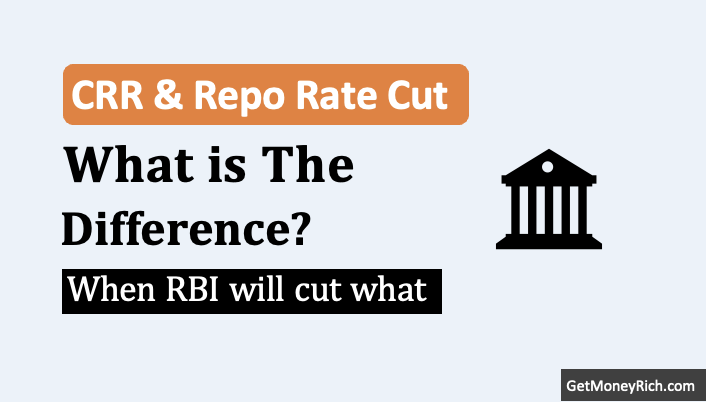Today, I stumbled across this headline from Deccan Herald: “India to be 3rd-largest economy by 2028, Morgan Stanley says.” Pretty exciting, right? The article talks about how India’s GDP is set to hit $5.7 trillion, overtaking Germany, thanks to a young population, smart economic reforms, and a knack for saving and investing. It’s the kind of story that makes you feel proud, like India’s finally getting its moment on the global stage.
Digging deeper, you’ll realize that India’s GDP per capita is not as great. India ranks about 140th out of 192 countries, with a nominal GDP per capita of just $2,937. That’s a huge gap from the top dogs like Luxembourg or Switzerland. And while I was trying to wrap my head around that, I tripped over this wild concept which talks about “Distorted GDP-per-capita for tax havens.” It’s sounds complicated, I know, but stick with me, it’s fascinating as well. This piece of knowledge might just change how you look at economic headlines like Indi becoming the third largest economy. .
What’s This “Distorted GDP-Per-Capita”?
GDP, or Gross Domestic Product, is basically the total value of everything a country produces, goods, services, you name it, in a year. Divide that by the population, and you get GDP per capita. It’s supposed to tell us how wealthy, on average, people in a country are. Simple, right?
Not so fast. Turns out, for some places, this number can be a total illusion. The culprits? Tax havens. These are countries or territories where companies flock to because of super-low taxes or lenient rules.
You must have head name of countries like Bermuda, the Cayman Islands, or even Ireland. In these spots, the GDP-per-capita numbers get “distorted” because of shady accounting tricks by big corporations.
How it works? Let’s say a massive tech company, let’s call it TechGiant, is based in the U.S. but wants to dodge taxes.
It sets up a tiny office, sometimes just a P.O. box, in Ireland or Luxembourg. Then, it funnels billions of dollars of profits through that office on paper, even though hardly any real work happens there.
Suddenly, Ireland’s GDP shoots up because all that money is counted as “produced” there. Divide that by Ireland’s small population of about 5 million, and the GDP per capita looks insane, like $100,000+ per person.
Meanwhile, the average Irish person isn’t rolling in cash, they’re just living lives like normal people of other countries.
The Numbers Don’t Lie… Or Do They?
This is where it gets jaw-dropping.
The International Monetary Fund (IMF) dropped a bombshell in 2018, about $12 trillion, nearly 40% of all foreign investment worldwide, is “artificial.” It’s just money sloshing through these empty corporate shells in places like the Netherlands, Singapore, or the British Virgin Islands.
These eight big “pass-through” economies handle over 85% of the world’s investments in what’s called “special purpose entities. It’s a fancy terms for companies that exist only to shuffle cash around and cut tax bills.
Ireland’s a classic example. Its GDP is so puffed up by this trickery that it’s 143% of its GNI (Gross National Income, tweaked to strip out the fake stuff). In 2017, Ireland’s Central Bank said, “Enough is enough,” and created this GNI stat to show what’s really going on.
The OECD and IMF jumped on board, too, because the old GDP numbers were basically a fairy tale.
So, What’s This Got to Do with India’s Big 2028 Moment?
Okay, let’s tie this back to that Deccan Herald article.
India’s on track to hit a $5.7 trillion GDP by 2028, it’s a great news. But when I saw that GDP per capita, it is only $2,937 and I started wondering, How do we know India’s numbers aren’t distorted, too? Is this massive growth really lifting everyone up, or is something funky going on behind the scenes?
Here’s the good news, India isn’t a tax haven like Ireland or Bermuda. Our economy is driven by real stuff, manufacturing, tech services, agriculture, and a billion-plus people hustling every day.
The Deccan Herald piece points to solid reasons for the growth, a young workforce, more foreign investment thanks to relaxed rules, and a culture of saving and investing. That’s not smoke and mirrors, that’s tangible.
But the “distorted GDP-per-capita” idea gives us a framework to dig deeper. It’s like a lens to ask, Who’s really benefiting from this $5.7 trillion? With a population of 1.4 billion, India’s GDP per capita will still lag behind countries like Germany, even in 2028.
If we do the math, $5.7 trillion divided by, say, 1.45 billion people, that’s about $3,931 per person. Better than $2,937, for sure, but Germany’s GDP per capita is $57,914. China which nearly as populated as India has a GDP per capita of $13,873 (almost 3 times of India). Indonesia which is the fourth most populated country has a GDP per capita of $5,248.
But still you can see these values are nowhere near the distorted $100,000+ figures of tax havens.
It’s a reminder that, neither big GDP doesn’t automatically mean everyone’s living large and not big GDP per capital is a very reliable number. Why? Because for some countries, the GDP per capita gets distorted due to their tax heaven status.
Why Should We Care About This Data?
You might be thinking, “Cool concept, but what’s this mean for me?” Fair question. Whether you’re in India or just watching from afar, this stuff matters because it shapes how we see the world.
When you hear a country’s “rich” because of its GDP per capita, now you know to double-check.
Double check what? Is it real wealth, or just corporate hot air? For India, the 2028 projection is exciting, but it’s also a nudge to ask how that growth trickles down, to the average person like you or me.
There is a reason why some like United States, Norway, Switzerland, etc countries are real rich countries.
- The U.S. can boast a massive, diverse economy driven by tech, manufacturing, and services, not just paper profits from corporate tax tricks.
- Norway leverages its oil wealth but pairs it with a robust welfare system and real productivity, not just financial loopholes.
- Switzerland thrives on high-value industries like banking, pharmaceuticals, and precision manufacturing, with a stable, transparent economy that’s not reliant on hiding other people’s money.
Similarly India’s rise isn’t distorted by tax haven shenanigans, which is awesome, it’s built on real effort. But that low GDP per capita? It’s a clue there’s still a long road ahead to spread the wealth around.
Conclusion
So, there you have it, now you know about the “distorted GDP-per-capita for tax havens.”
India’s $5.7 trillion dream by 2028 isn’t a mirage like some tax haven stats, it’s grounded in real progress.
But it’s also a heads-up that GDP alone doesn’t tell us everything. Next time you’re chatting about the news, toss the concept of GDP per capita. Now you know that countries like Macau, Luxembourg, Ireland, etc have a very high GDP per capita, but it is mainly because of their tax haven status.
What do you think, does this change how you see India’s big moment? Let me know.


![How Changes in Oil Supply Affect the World and our Investments [Explained] - Thumbnail](https://ourwealthinsights.com/wp-content/uploads/2025/03/How-Changes-in-Oil-Supply-Affect-the-World-and-our-Investments-Explained-Thumbnail-768x463.png)


